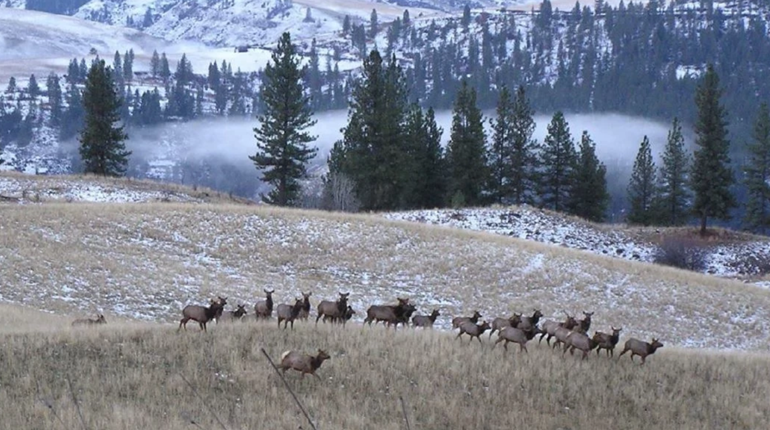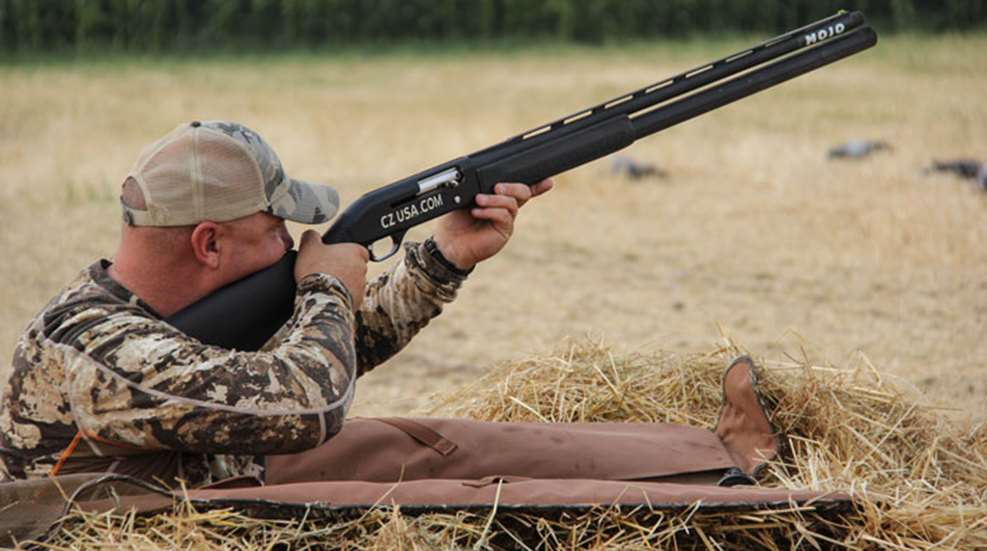
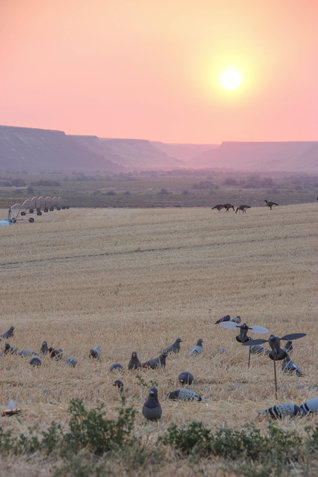
From the hot, dusty confines of a coffin blind I scanned the sky for any sign of birds. Our hunting party was positioned at the eastern edge of a freshly-harvested wheat field in southern Idaho, and the stubble rows were lined with more than three-dozen full-body pigeon decoys that reflected the white light of morning. It was August, and by 9:00 a.m., temperatures were rising quickly, turning the interior of the blind into a makeshift convection oven that robbed all moisture from the air. That didn’t matter to me, though, because as the temperature was heating up, so was the wingshooting.
Across the valley there were a series of high cliffs, and I could see pigeons gathering in the air above the rocks. The flock was leaving the roost in search of food, and after circling the sheer cliffs, the birds lined out over the wheat field and headed our way.
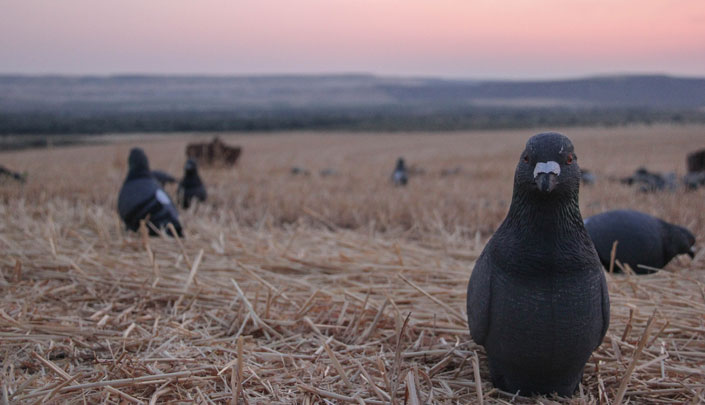
“Get ready,” said Neal Hunt of Soar No More Decoys. “Here they come.”
Dozens of birds headed in our direction. As they grew closer, I adjusted my shotgun and waited for the pigeons to commit and drop into the decoys, tucking their wings and gliding down from the sky like so many mallards into timber. I lost them in the sunlight and sat motionless waiting for Neal’s call to shoot.
“Take ‘em!”
At once we burst through the blind doors and chose our targets. I shot at a bird, lost it in the sun, and switched to another. All down the line hunters fired, and when the wheat field grew quiet once more we had several birds down. There was no time to gather the pigeons, though, since more birds were already visible on the far horizon and were coming our way.
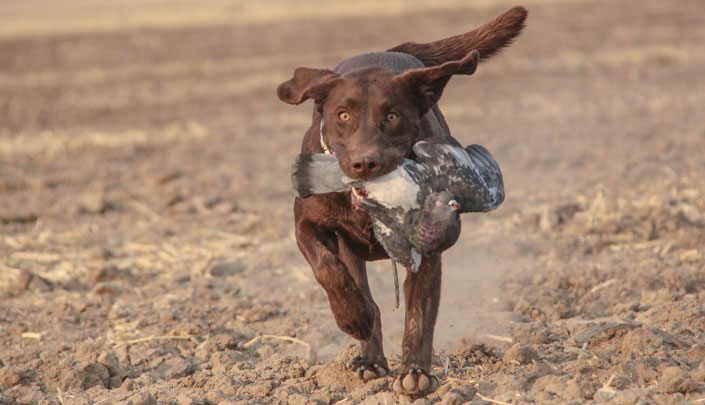
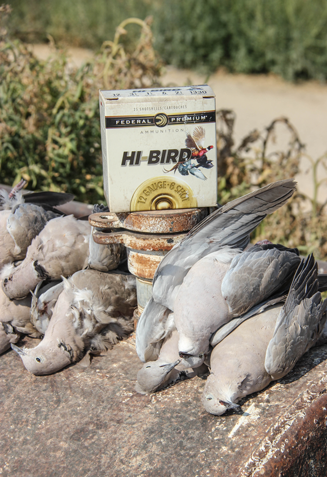
A Most Unlikely Game Bird
The rock dove, also known as the common pigeon (or less magnanimously, as the sky rat), is an invasive member of the Columbidae family of birds. Native to Europe and northern Africa, the pigeon was domesticated centuries ago, and since that time feral birds have established populations around the globe. Prolific and adaptable, pigeons number more than 400 million birds worldwide; New York City alone is home to approximately one million of these birds. Though they’re most closely associated with urban areas, pigeons have fared well in farm country, too. In fact, these non-native birds have created ecological and financial problems in rural areas, outcompeting native species and damaging or destroying crops, machinery and barns.
Neal Hunt grew up among the dairy farms and agricultural fields of Owyhee County, ID. With so much agriculture, the area is naturally attractive to pigeons, and there’s little question the birds far outnumber humans in this remote corner of the Gem State. This prompted Neal to try something new: decoying pigeons. He quickly learned the birds not only come to decoys, they come in droves.
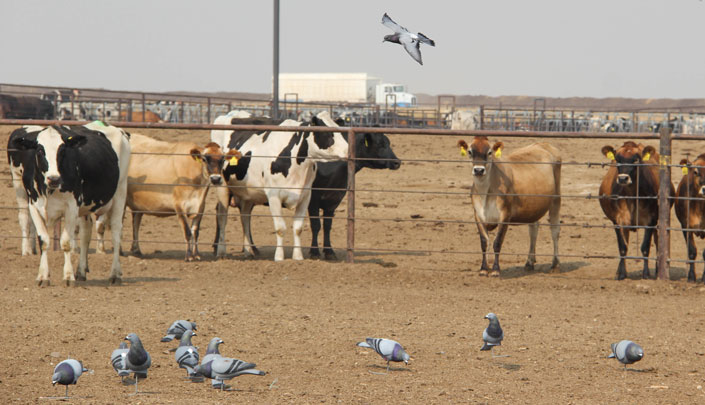
Neal founded Soar No More Decoys, and soon he began guiding high-volume pigeon hunts in southern Idaho. Pigeon hunting grew in popularity, and with good reason—the birds are abundant and, since they’re invasive, there were no seasons or bag limits. Farmers were thrilled to have someone help knock down feral pigeon populations, and the number of birds and the volume of shooting astounded visiting hunters. From Ohio to Minnesota, and from Texas to Idaho, hunters began pursuing pigeons on purpose. Soar No More had to ramp-up decoy production to meet demand as more and more American hunters took advantage of this low-cost, low-impact, year-round hunting opportunity.
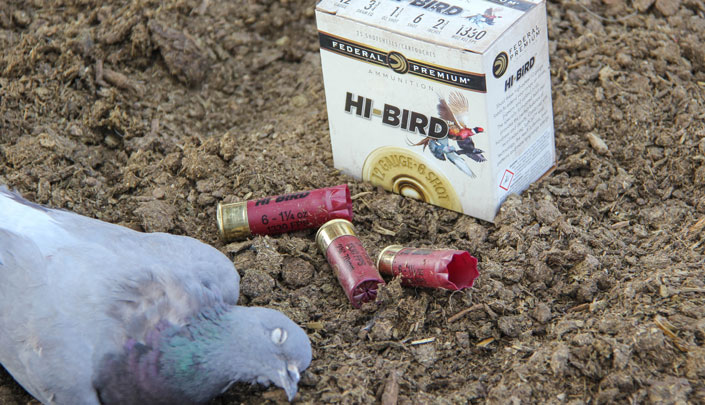
A New Invasive, a New Opportunity
As pigeon hunting was beginning to rise in popularity, a new invasive Columbidae bird began spreading across the country—the Eurasian collared dove. Introduced to the United States from the Bahamas in the late 20th century, collared doves quickly spread, and, like the pigeon, became a nuisance because they outcompeted native species, particularly closely related native mourning doves.
But these birds also presented an opportunity for hunters. Where collared doves exist in high numbers—and their ranges are expanding nationwide—these birds offer high-volume, low-cost shooting.
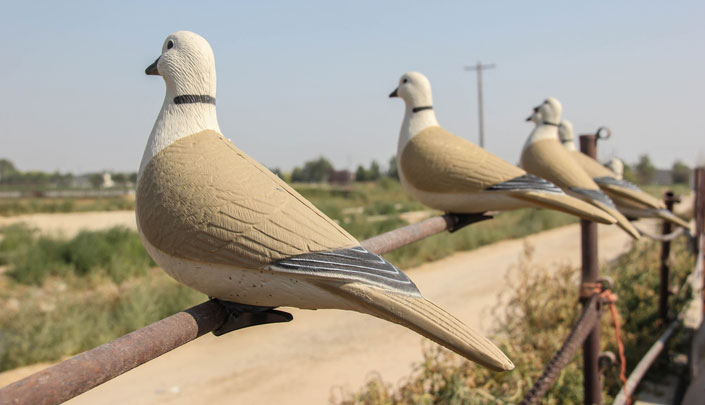
As with pigeons, Neal Hunt saw an opportunity with the rising number of collared doves, and began developing and selling Soar No More Collared Dove Decoys. I had an opportunity to test some of these dekes at a busy grain field in Idaho, where the farmer was only too happy to have dove hunters around, since the birds had been raiding his crops regularly. Seated on an empty five-gallon bucket under the shade of an old barn roof, I pass-shot doves for hours. I missed more birds than I hit (like their cousin, the mourning dove, collared doves fly fast and dive left and right), but I managed to take a couple dozen birds by the day’s end.
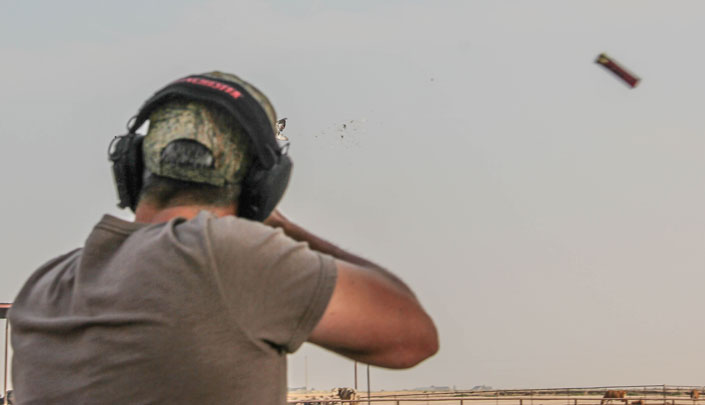
Why You Should Be Hunting Collared Doves and Pigeons
A more appropriate question, I suppose, is why shouldn’t you be hunting these birds? As invasives, both pigeons and collared doves pose a very real threat to native species; as such, measures need to be put into place to control their populations. As previously stated, seasons are liberal and, in many areas, pigeons and collared doves are open year-round with no bag limits. It’s worth noting, though, that collared doves can be confused with native mourning doves, so it’s essential you be able to differentiate between the two. Collared doves are larger than mourning doves and, as their name suggests, they have a dark band of feathers around the rear portion of the neck.
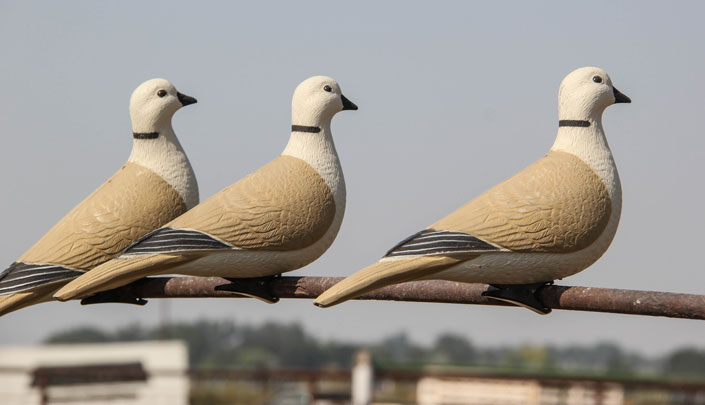
As members of the Columbidae family, both pigeons and collared doves make excellent table fare. After our shoot in Idaho, Brooks Hansen from Camp Chef prepared the pigeons with mango and bacon, and the birds were delicious. Some people have an aversion to eating pigeon, but wild birds that subsist on grains are very different than the more familiar urban pigeons, who survive on a diet of filthy food scraps and other flotsam discarded on city streets. Collared doves taste very much like mourning doves, which is to say excellent, and are larger, meaning more meat per bird.
Getting Started
Finding a place to hunt collared doves and pigeons isn’t difficult. Pigeons in particular are drawn to dairy farms, and most dairy operations are only too happy to have help controlling the birds. On our Idaho pigeon hunt we spent a very productive afternoon shooting birds on a massive dairy. Collared doves are also drawn to agricultural areas favoring spots where waste grain is easily accessible—often around barns and in cutover fields. Historically, collared doves have been most common in the southern half of the United States—Texas, Oklahoma and eastern Colorado all have large populations of these birds, although in recent years collared doves have expanded their range over much of the country. Odds are that most hunters live in an area where collared doves are present.
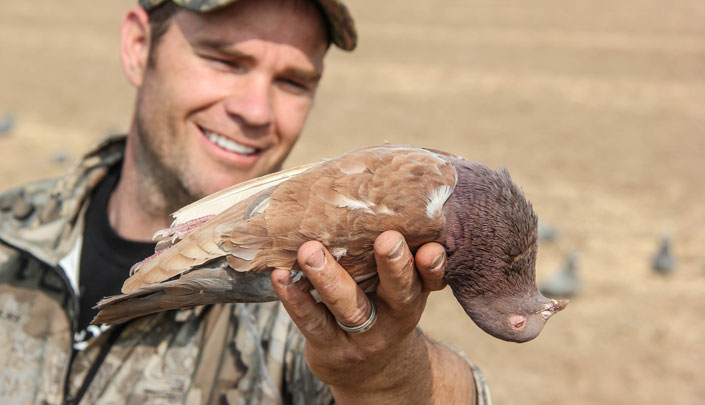
Hunting pigeons and collared doves requires minimal gear—a shotgun loaded with No. 6, 7½ or 8 shot will generally suffice. While in Idaho, we used Federal’s Hi-Bird 12-gauge ammunition, specifically designed to optimize effective range and reduce recoil thanks to a two-piece wad with SoftCell engineering that makes high-volume shooting more pleasant. In addition, Hi-Bird is affordable, a plus if you’re shooting dozens of shells a day.
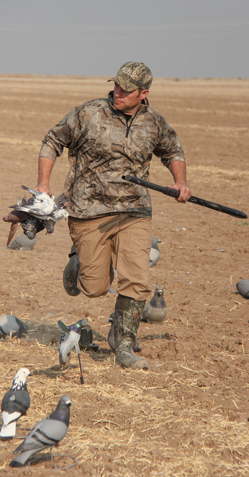
Both pigeons and collared doves have good eyesight and are quick to flare if they’ve been hunted before, so a layout or ground blind and camo clothing will aid in concealment. Soar No More offers lifelike decoys that mimic both pigeons and doves, and they’re a worthwhile investment since they add a level of realism and prompt the birds to come into shotgun range.
In 2020, make plans to extend your hunting season and take part in one of the fastest-growing trends in wingshooting. Plus, when you hunt collared doves and pigeons you’re helping control populations of these feral non-native species, while simultaneously filling your freezer.














